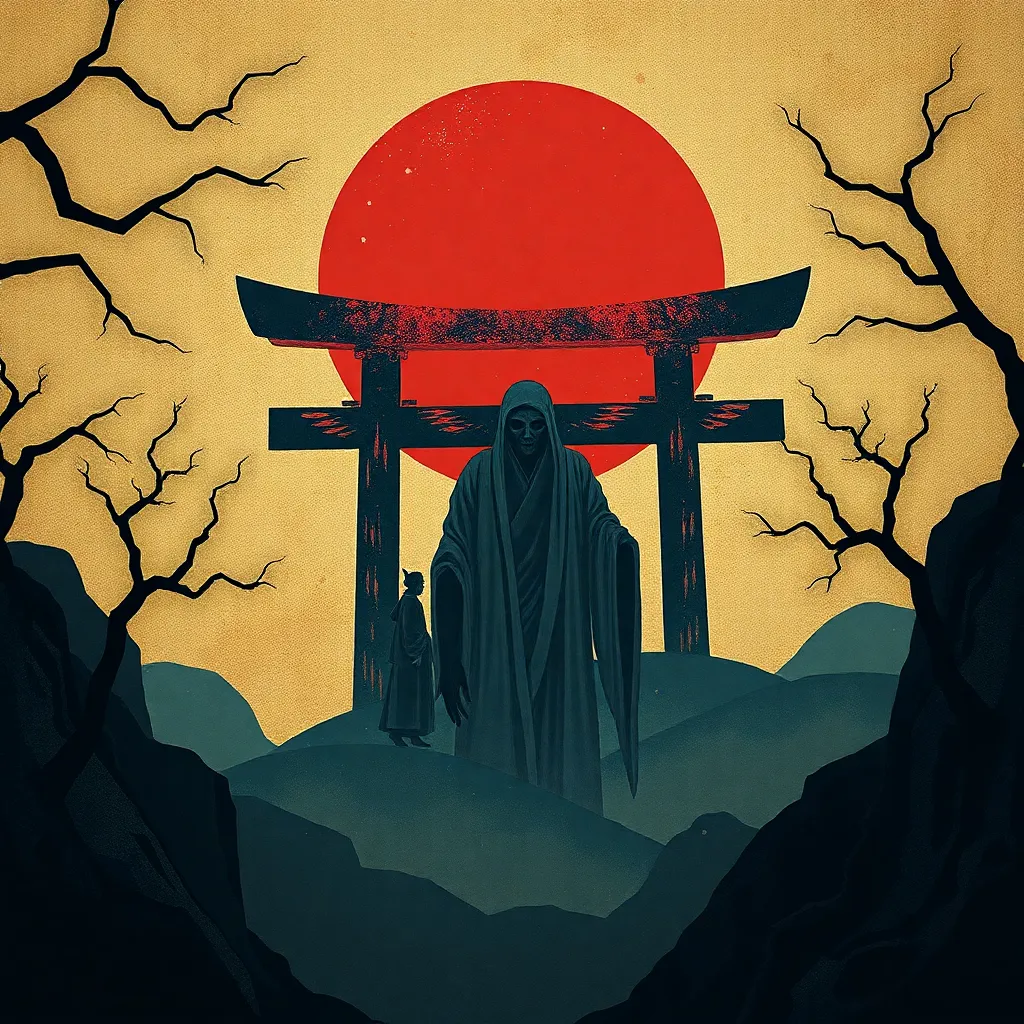The Curse of the Deceased: Investigating the Japanese Legends of the Iki-jime
I. Introduction to Iki-jime
In Japanese culture, Iki-jime refers to the concept of a curse associated with the deceased. This belief highlights the intricate relationship between the living and the dead, emphasizing how unresolved issues or grievances can lead to supernatural consequences. The term itself can be translated as “the act of killing” or “death,” but its implications extend far beyond mere definitions.
Iki-jime is deeply rooted in folklore and traditional beliefs, playing a significant role in the cultural fabric of Japan. The notion of curses related to the deceased manifests in various ways, influencing rituals, interactions, and even daily life among the Japanese people.
II. Historical Context of Iki-jime
The origins of the Iki-jime legend can be traced back to ancient Japanese animism and Shinto practices, where it was believed that the spirits of the deceased could harbor feelings of resentment or anger towards the living. Historical events, such as wars, famines, and societal upheavals, have shaped the perception of this curse, leading to a heightened awareness of the importance of honoring the dead.
During the Edo period, the fear of Iki-jime grew as families began to witness the consequences of neglecting ancestral worship. This period also saw an increase in the documentation of such legends, with stories often passed down through generations, reinforcing the belief in the curse.
III. The Mythology Behind Iki-jime
Various key figures and deities are associated with the curse of Iki-jime. One of the most notable is Yama-uba, a mountain witch known for her connection to the spirits of the dead. She is often depicted as a vengeful figure who exacts punishment on those who disrespect the deceased.
Common themes and symbols in Iki-jime stories include:
- Resentment: The idea that the deceased may harbor grudges against the living.
- Restoration of balance: The necessity of appeasing the spirits to restore harmony.
- Rituals: Acts performed to honor the dead and prevent the curse from taking effect.
IV. The Psychological Impact of Iki-jime
The fear and superstition surrounding the Iki-jime curse can have profound psychological effects on individuals and communities. Many Japanese people engage in various practices to ward off potential curses, reflecting a deep-seated anxiety about the repercussions of neglecting the deceased.
Personal testimonies and accounts from those affected by the curse often reveal chilling experiences. People have reported:
- Strange occurrences in their homes, such as unexplained noises or objects moving.
- Illness or misfortune following the neglect of a family member’s grave.
- Recurring dreams of deceased relatives expressing anger or sorrow.
V. Cultural Representations of Iki-jime
Iki-jime has found its way into various forms of literature and art, serving as a poignant reminder of the consequences of ignoring the dead. Authors and artists have depicted the curse in haunting tales and visual representations, often exploring themes of tragedy and remorse.
Modern adaptations of Iki-jime can be seen in films and media, where the curse is portrayed as a central theme in horror genres. Films often depict characters who inadvertently provoke the wrath of the deceased, leading to a series of misfortunes that serve as a cautionary tale.
VI. The Role of Iki-jime in Contemporary Society
In contemporary Japan, the view of the Iki-jime legend is multifaceted. While some may regard it as an archaic superstition, many still hold a reverence for the customs surrounding the care of the deceased. Rituals such as Obon, where families honor their ancestors, reflect the ongoing importance of these beliefs in society.
Ongoing rituals and practices related to the curse include:
- Regular visits to gravesites to clean and maintain them.
- Offerings of food and incense to appease the spirits.
- Participation in community festivals that honor the dead.
VII. Comparative Analysis with Other Cultures
The concept of curses related to the deceased is not unique to Japanese culture; similar legends exist globally. For instance, in Western folklore, the idea of a vengeful ghost is prevalent, often linked to unresolved issues at the time of death.
Cultural significance and interpretations of death-related curses can vary widely. In some cultures, such as those in parts of Africa and the Caribbean, the spirits of the deceased are revered and consulted, while in others, they are feared and avoided.
VIII. Conclusion: The Legacy of Iki-jime
The Iki-jime legend serves as a reflection of the enduring nature of cultural beliefs surrounding death and the afterlife. It underscores the importance of respecting the deceased and recognizing their ongoing presence in the lives of the living.
Understanding Iki-jime provides valuable insights into Japanese culture and beliefs today. As modern society continues to evolve, the legacy of Iki-jime remains a potent reminder of the intricate relationships between the living and the dead, highlighting the importance of honoring those who have passed on.



